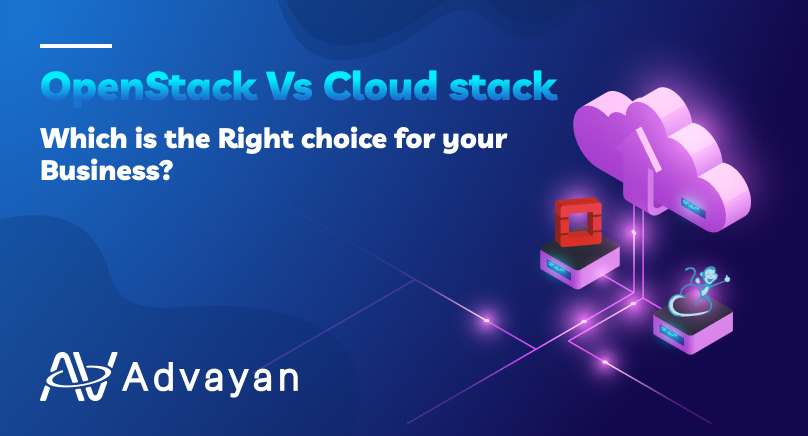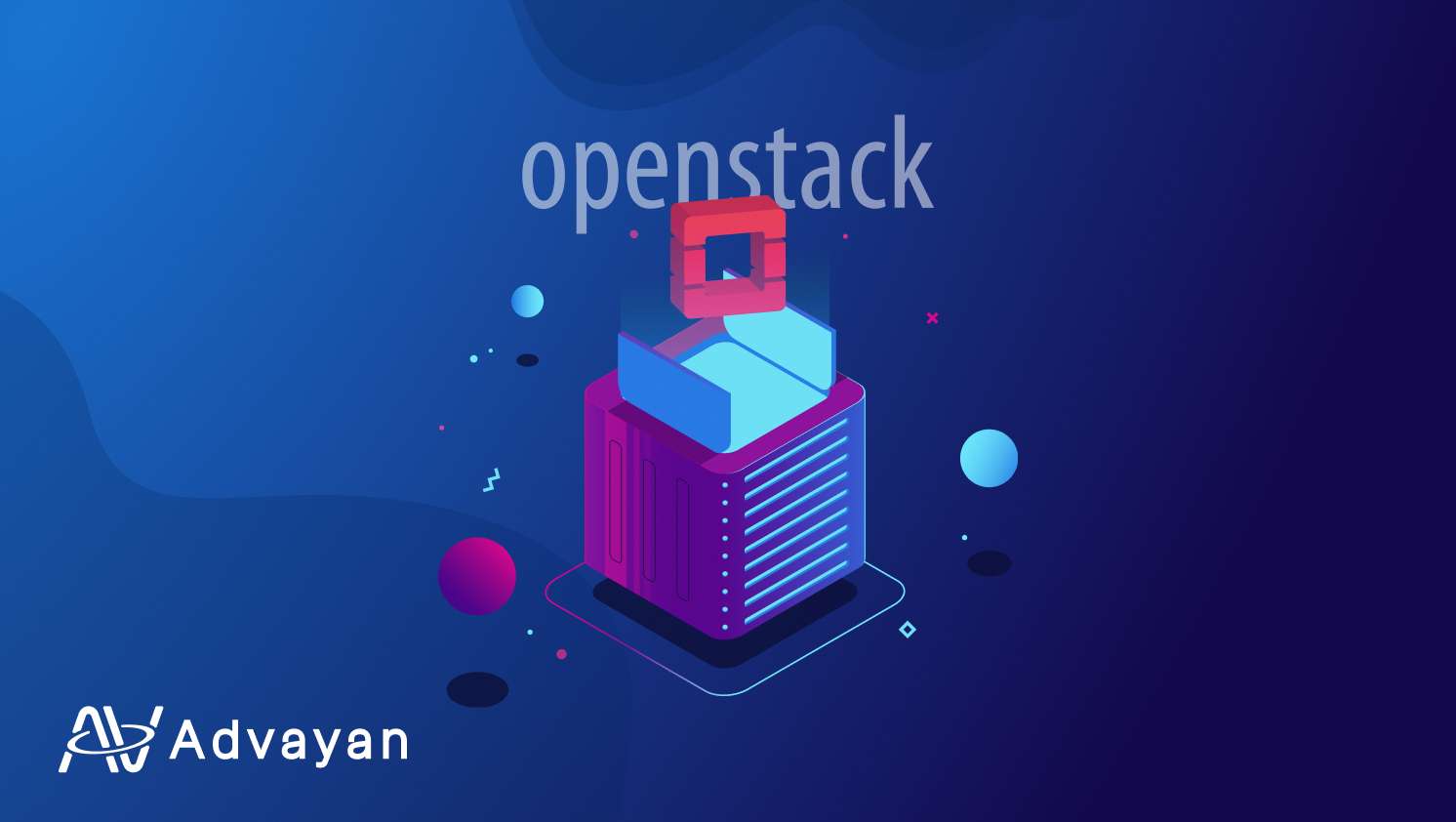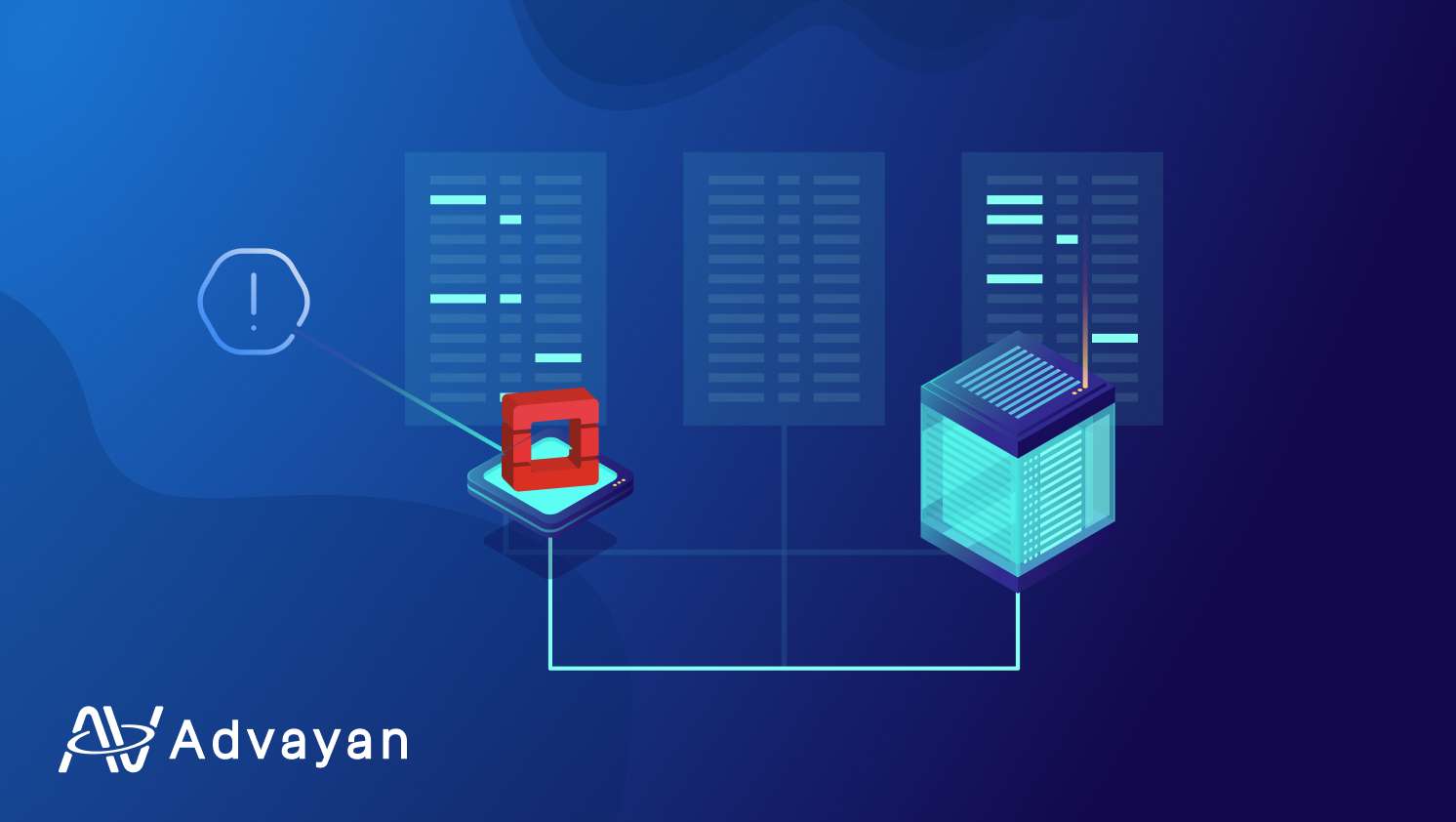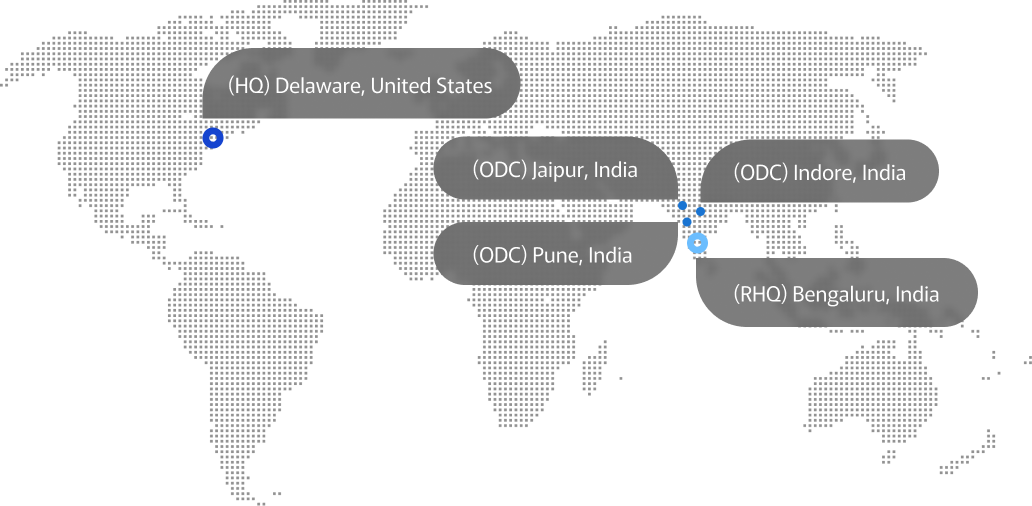
OpenStack vs CloudStack: Which is the Right choice for Your Business?
Introduction
Confused between the two cloud computing options? Whether to choose OpenStack or CloudStack?
We’ve got you covered? Read ahead to understand which cloud computing service to pick for your business!
There is a rapid increase in the demand of cloud computing, and businesses are presented with an array of options to propel their operations to new heights of efficiency, flexibility, and scalability. Among these options, two prominent open-source cloud platforms have emerged as powerful contenders: OpenStack and CloudStack. These platforms offer organizations the ability to build and manage their cloud infrastructures, but their approaches and strengths differ in intriguing ways.
In this comprehensive, we will take a close look into both OpenStack and CloudStack, dissecting their architectures, features, and capabilities to help you make an informed decision about which platform aligns best with your business goals. As each platform presents a unique blend of advantages and considerations, our aim is to guide you through the labyrinth of choices and intricacies, ultimately leading you to the platform that harmonizes seamlessly with your specific requirements.
Whether you’re a startup seeking simplicity, a mid-sized enterprise with complex demands, or a large corporation requiring robust customization, the OpenStack vs CloudStack debate has implications for you. With our comprehensive guidance you can make an informed decision whether to go for OpenStack or CloudStack.
Table of Content
- What is OpenStack?
- Here are some key aspects and components of OpenStack
- Main Software Involved in OpenStack
- Advantages of OpenStack
- Disadvantages of OpenStack
- What is CloudStack?
- Key features of CloudStack include
- Advantages of using the CloudStack cloud computing system
- What do OpenStack and CloudStack have in common?
- Differences between OpenStack and CloudStack
- OpenStack or CloudStack, What should You choose?
- Some Final Words
What is OpenStack?
OpenStack is an open-source cloud computing platform that enables the creation, management, and deployment of virtualized resources and services within a data center. It’s designed to provide a flexible and scalable infrastructure-as-a-service (IaaS) solution, allowing organizations to build and manage their own private and public cloud environments.
Here are some key aspects and components of OpenStack
1. Modular Architecture: OpenStack is made up of several interrelated services, each serving a specific function within the cloud infrastructure. These services can be combined and customized based on the needs of the organization.
2. Compute (Nova): This service manages and provisions virtual machines (VMs) and instances. It enables the scalable and efficient allocation of computing resources to meet the demands of different workloads.
3. Storage (Swift and Cinder): OpenStack provides both object storage (Swift) for storing and retrieving unstructured data like files and images, and block storage (Cinder) for attaching storage volumes to instances.
4. Networking (Neutron): Neutron handles the networking aspects of OpenStack, allowing administrators to manage virtual networks, routers, subnets, and other networking components.
5. Identity (Keystone): Keystone provides authentication and authorization services, ensuring secure access to OpenStack resources. It manages user identities, roles, and permissions.
6. Image Service (Glance): Glance manages virtual machine images used for launching instances. It stores and retrieves images and their metadata.
7. Orchestration (Heat): Heat is the orchestration service that allows users to define and manage templates for automatically deploying and scaling resources.
8. Dashboard (Horizon): Horizon is the web-based user interface for managing and interacting with OpenStack services. It provides a graphical interface for administrators and users to control and monitor their cloud resources.
9. Telemetry (Ceilometer): Ceilometer collects data about the usage and performance of various OpenStack services, enabling better resource optimization and capacity planning.
10. Data Processing (Sahara): This service facilitates the provisioning of big data processing frameworks like Hadoop and Spark on OpenStack clusters.
OpenStack’s open-source nature and modular architecture make it a versatile solution for various use cases, including private and public clouds, hybrid clouds, and multi-cloud environments. Organizations can tailor their OpenStack deployments to meet specific requirements and integrate with other tools and services.
It’s worth noting that while OpenStack provides a powerful platform for cloud infrastructure, its deployment and management can be complex, requiring a good understanding of the various components and their interactions.
Main Software Involved in OpenStack
OpenStack operates predominantly with the Python programming language and employs RabbitMQ for seamless communication between its various components. Database control is managed through MySQL or compatible database servers such as MariaDB or Galera, ensuring efficient data storage and retrieval.
Advantages of OpenStack
1. Flexibility and Customization: OpenStack’s modular architecture allows organizations to build cloud environments tailored to their specific needs. With the ability to choose and integrate different services, companies can create customized solutions that align with their workloads and requirements.
2. Scalability: OpenStack enables seamless scaling of resources, both up and down, to accommodate fluctuating workloads. This elasticity ensures that applications and services can handle varying levels of demand without compromising performance or incurring unnecessary costs.
3. Cost-Efficiency: By providing an open-source platform, OpenStack helps reduce vendor lock-in and associated costs. Organizations can use commodity hardware and open-source tools, lowering the overall expenses associated with cloud infrastructure while still maintaining high levels of performance and functionality.
4. Hybrid and Multi-Cloud Capabilities: OpenStack supports hybrid cloud and multi-cloud strategies, allowing seamless integration between private and public clouds or different cloud providers. This flexibility enables businesses to move workloads between environments and avoid vendor-specific constraints.
5. Open Source Community: The strong and active OpenStack community continually contributes to the platform’s development and improvement. This collaboration results in frequent updates, bug fixes, and the addition of new features, ensuring that the platform remains innovative and relevant in the rapidly evolving cloud landscape.
Disadvantages of OpenStack
1. Complexity: OpenStack’s modular architecture can lead to complexity during deployment and management. The numerous components and configurations require a deep understanding, skilled administrators, and ongoing maintenance.
2. Resource Intensive: Running an OpenStack environment demands substantial hardware resources, including computing power, storage, and networking. This can result in higher infrastructure costs compared to simpler cloud solutions.
3. Steep Learning Curve: Due to its intricate nature, mastering OpenStack requires a significant learning curve. Training personnel to effectively manage and troubleshoot the platform can be time-consuming and resource-intensive.
4. Lack of Standardization: As an open-source platform, OpenStack deployments can vary significantly between different organizations and deployments. This lack of standardization can lead to compatibility and interoperability challenges, particularly in hybrid or multi-cloud environments.
5. Limited Vendor Support: While there are commercial vendors offering support for OpenStack, the level of support can vary. Some organizations might face difficulties in finding robust vendor support that matches their specific needs, leading to potential issues during critical situations.
What is CloudStack?
CloudStack is an open-source cloud computing platform that facilitates the creation, management, and orchestration of cloud infrastructure and resources. Similar to OpenStack, CloudStack is designed to offer Infrastructure as a Service (IaaS) capabilities, allowing organizations to build and manage their own private and public cloud environments.
Key features of CloudStack include
1. Scalability: CloudStack enables easy scaling of computing, storage, and networking resources, allowing organizations to accommodate varying workloads and demands.
2. Multi-Tenancy: It supports the creation of multiple isolated environments within a single cloud infrastructure, enabling different users or departments to share the same infrastructure while maintaining security and separation.
3. Resource Management: CloudStack provides tools to manage and allocate computing resources, storage, and networking efficiently, ensuring optimal utilization of available infrastructure.
4. Networking: The platform offers robust networking features, including virtual networks, routers, load balancers, and firewall services, allowing administrators to design and manage complex network configurations.
5. Self-Service Portal: CloudStack comes with a user-friendly self-service portal that allows end-users to provision and manage their own virtual machines, storage, and other resources, reducing the need for direct intervention from administrators.
6. Hypervisor Support: It supports multiple hypervisors, including popular options like VMware, KVM, and Xen, allowing flexibility in choosing virtualization technologies.
7. APIs and Integration: CloudStack provides APIs (Application Programming Interfaces) for programmatic control and integration with other systems, enabling automation and seamless integration with third-party tools.
8. Templates and Snapshots: CloudStack supports the creation and deployment of virtual machine templates, allowing users to quickly spin up new instances based on predefined configurations. Snapshots facilitate data backup and recovery.
9. High Availability: The platform offers features for ensuring high availability and fault tolerance, reducing the risk of downtime for critical applications.
Advantages of using the CloudStack cloud computing system
1. Ease of Deployment: CloudStack offers simplified deployment and setup processes, making it relatively straightforward to create and manage cloud infrastructure. This ease of deployment can save time and resources during initial implementation.
2. Centralized Management: CloudStack provides a unified management interface that allows administrators to control and monitor various aspects of the cloud environment, including virtual machines, storage, networking, and user access, from a single dashboard.
3. Multi-Hypervisor Support: CloudStack supports multiple hypervisors, such as VMware, KVM, and Xen, offering flexibility in choosing the virtualization technology that best suits your organization’s needs and existing infrastructure.
4. Scalability: With CloudStack, it’s possible to scale resources both vertically (adding more power to individual instances) and horizontally (increasing the number of instances). This scalability helps accommodate changing workloads and demands.
5. Self-Service Provisioning: CloudStack features a self-service portal that empowers end-users to provision and manage their own virtual machines and resources. This reduces the burden on administrators, improves efficiency, and gives users greater control over their computing resources.
What do OpenStack and CloudStack have in common?
In the ever-evolving landscape of cloud computing, both OpenStack and CloudStack stand out as prominent players, each offering robust solutions for businesses seeking to harness the power of the cloud. While they have distinct features and approaches, there are several commonalities that make them both valuable choices for different organizational needs.
1. Open-Source Foundation: One of the most significant commonalities between OpenStack and CloudStack is their open-source nature. Both platforms are built on collaborative development models, allowing businesses to avoid vendor lock-in and enabling customization to meet specific requirements.
2. IaaS Framework: Both OpenStack and CloudStack are Infrastructure as a Service (IaaS) frameworks, providing a comprehensive set of tools and services to manage virtualized resources, networking, storage, and computing power.
3. Scalability and Flexibility: Both platforms emphasize scalability and flexibility, enabling organizations to expand their cloud infrastructure as their needs grow. They support horizontal and vertical scaling, ensuring seamless adjustments to accommodate changing workloads.
4. APIs and Integration: OpenStack and CloudStack offer Application Programming Interfaces (APIs) that facilitate integration with other systems, tools, and services. This interoperability allows for automation and smoother collaboration across various components.
5. Community and Support: Both platforms benefit from active communities of developers, users, and contributors. This translates to ongoing updates, enhancements, and a wealth of resources available to assist businesses in effectively implementing and managing their cloud environments.
While OpenStack and CloudStack share these commonalities, it’s important to recognize that their differences, such as architecture, features, and deployment complexity, play a crucial role in determining which platform aligns best with your business goals and technical requirements. By understanding the unique strengths of each platform, businesses can make informed decisions to optimize their cloud infrastructure strategy.
Differences between OpenStack and CloudStack
| Technology | Ease of Use | Feature Sets | Forum Support |
|---|---|---|---|
| OpenStack | OpenStack’s modular architecture allows for tailored configurations but often demands a higher learning curve and more experienced administrators. | OpenStack boasts a large and active community that contributes to its development, resulting in frequent updates and extensive resources. | OpenStack boasts a large and active community that contributes to its development, resulting in frequent updates and extensive resources. |
| CloudStack | CloudStack is known for its relatively streamlined setup process, making it more accessible for organizations seeking a more user-friendly approach. | CloudStack, while still offering a comprehensive suite of services, may excel for smaller or less complex deployments due to its more integrated nature. | CloudStack, while having a smaller community, can provide more personalized attention and a closer-knit support environment. |
OpenStack or CloudStack, What should You choose?
When deliberating between OpenStack and CloudStack, the decision hinges on your specific business context. CloudStack emerges as a favorable choice, particularly for small-scale cloud service providers and medium-sized businesses. Alternatively, OpenStack, with its robust capabilities, can also be harnessed by small and medium enterprises. However, its optimal utilization necessitates a team of proficient developers, making it a prime contender for larger enterprises.
Should uncertainty persist regarding the most suitable solution for your company, rest assured that Advayan is here to guide you. Our seasoned consultants are at your service, poised to assist you in selecting the software that impeccably aligns with your unique business requirements.
Some Final Words
In the grand scheme, the victor in this comparison holds less significance, as the transition of your private cloud remains feasible. Through precise management, servers can be deconstructed and reestablished at will. As interest in these cloud management platforms has continued to soar in recent years, data from the survey emphasizes that OpenStack currently enjoys greater popularity.
Ultimately, your choice should harmonize with the demands of your project’s advancement. At Advayan, we leverage OpenStack technology within our Managed Cloud Servers offering. Our sales team is available at your convenience to explore your requirements and how cloud servers can elevate your business.














